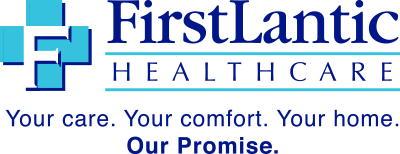We have all heard that having a high cholesterol score is not good for our health. But you may not know what good and bad Cholesterol is, why it matters and what to do about it if you are in an unhealthy range. So, in support of National Cholesterol Education Month, FirstLantic wants to do our part to educate on the risks of high Cholesterol and provide some simple steps to get you back on the path to health. High Cholesterol is a huge problem that affects 102 million Americans over the age of 20. It can be caused by an unhealthy diet, lack of exercise, and exacerbated by smoking.
What is Cholesterol exactly?
Cholesterol is a waxy type of fat or lipid that is used and produced by the body but can also come from animal-based foods and only animal-based food. Most people don’t need Cholesterol from food as the body usually produces enough on its’ own. We need healthy Cholesterol because it helps the cell membranes form layers that protect the contents of the cell by determining what can and cannot enter or leave the cell. It is also necessary to help digest foods, make certain hormones, and produce Vitamin D. Cholesterol is produced by the liver, which makes enough of it to ensure that your body can perform these vital functions. That means that Cholesterol that comes from sources outside the body is not necessary or healthy. Because Cholesterol cannot mix or dissolve in your blood, it needs the help of lipoproteins to move through your body. These lipoproteins include:
- Low-density lipoprotein (LDL) is one of the two main lipoproteins. LDL is often called “the bad cholesterol.”
- High-density lipoprotein (HDL) is the other main lipoprotein. HDL is often called “the good cholesterol.”
- Very-low-density lipoproteins (VLDL) are particles in the blood that carry triglycerides. Triglycerides and Cholesterol are both fatty substances, but Triglycerides are fats, and Cholesterol is not.
So, if we need Cholesterol, why do we have to worry about how much we have?
Too much Cholesterol can cause problems. If your cholesterol levels are high, the condition is called hypercholesterolemia. The “bad cholesterol” or LDL can build up on the walls of your arteries and make them narrower and cause blockages called atherosclerosis. Two fats come from animals and can be harmful if your body has too much of them in your system. The first is saturated fats which come from animal-derived products such as meat, milk, cheese, and butter.
Trans fats result when liquid fats are put through the hydrogenation process to become solid. Trans fats are found in fast foods and fried foods and are used to extend the shelf-life of processed foods like cookies, crackers, and baked goods. Though the FDA banned trans fats and became effective on June 18, 2018, products manufactured before that date could still be distributed until January 2020, or in some cases, 2021. Additionally, foods containing less than 0.5 grams of trans fats per serving are labeled as having 0 grams of trans fats. For a list of foods that still contain trans fats, click here.
Who should have their Cholesterol checked?
Recommendations are that everyone over the age of 20 should have their Cholesterol measured every five years. It is done through a simple blood test.
What is a normal range of Cholesterol?
| Age and sex | Total
cholesterol |
Non-HDL
cholesterol |
LDL
cholesterol |
HDL
cholesterol |
| People aged 19 years
and younger |
Less than 170 mg/dL | Less than 120 mg/dL | Less than 110 mg/dL | More than 45 mg/dL |
| Men aged 20 years
and older |
125 mg/dL to 200 mg/dL | Less than 130 mg/dL | Less than 100 mg/dL | 40 mg/dL or higher |
| Women aged 20 years
and older |
125 mg/dL to 200 mg/dL | Less than 130 mg/dL | Less than 100 mg/dL | 50 mg/dL or higher |
What happens if I get a test result back that is too high?
Doctors usually recommend starting with changes in lifestyle rather than medications, although, for some people, medications might be necessary right away. However usually, lifestyle modifications can accomplish the lowering of Cholesterol to a healthy range. Changes include:
- Quit smoking
- Eat heart-healthyfoods like fruits, vegetables, poultry, fish, and whole grains. Limit or eliminate red meat, sugary products, and dairy products made with whole milk. For easy recipes, click here.
- Get more exercise – about 30 minutes per day for most days of the week.
- Maintain a healthy weight. Losing even 10% of your body weight makes a difference in your cholesterol levels.
- Reduce stress
- Control blood sugar and blood pressure
The bottom line is that we have the power to live healthier lives if we have the will. When you take steps to reduce your Cholesterol, you are also doing something that shows respect for your body by taking care of it. If you don’t think you can do it alone, many resources can get you on the right track. And for some added inspiration, think about how your health impacts others, such as your children, spouse, or other relatives and friends. Changing your lifestyle will not only significantly impact the quality of your life but the lives of those that you love.
For more information on FirstLantic, please click here
To read more of our blogs, click here
 AVAILABLE 24 HOURS A DAY/7 DAYS A WEEK
AVAILABLE 24 HOURS A DAY/7 DAYS A WEEK Careers
Careers







